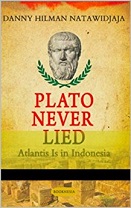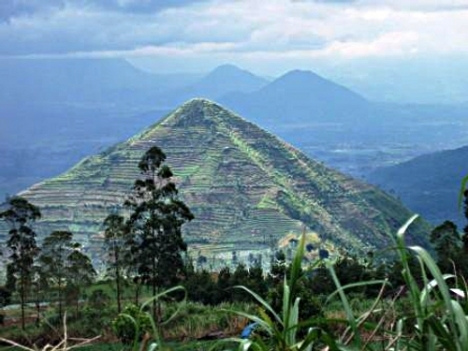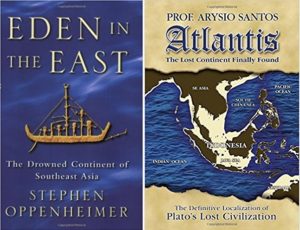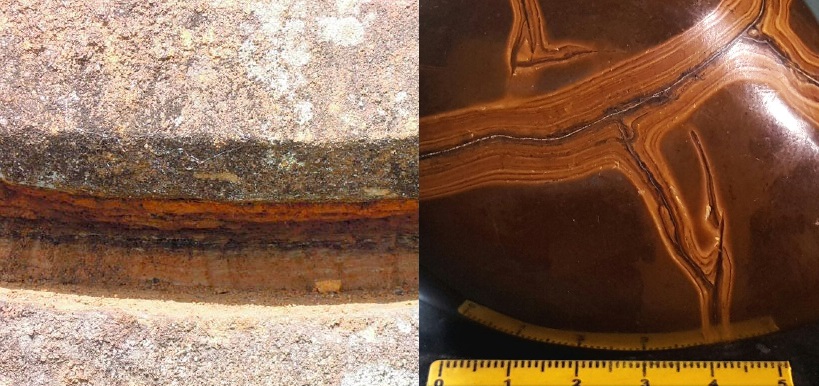Older than Egypt! Greater than Giza! In November 2011, the organizer of the Ancient Catastrophe Team, Andi Arief, announced to the world you had found an immense and immensely ancient pyramid inside a mountain in West Java. The evidence was impeccably scientific, including radiocarbon dates and all manner of resistivity and seismic and magnetic remote sensing. You presented the evidence yourself in February 2012, at meetings in Jakarta and Bali, affirming in front of no less a scholar than Stephen Oppenheimer that the mountain was artificial. Gunung Padang for the win!
Except, the mountain in question was not Gunung Padang. It was G. Sadahurip, and it was only one of several pyramid-shaped hills for which similar claims were made: Lalakon, Putri, Kaledong, Haruman, up to eighteen altogether including G. Padang. What happened to all those other pyramids, Danny? I should have thought you’d be presenting them proudly as further evidence of your advanced pre-Holocene civilization, and yet—as far as I could find—they vanished from your narrative not long after those announcements were made. Why did Gunung Padang suddenly become an only child?
Well, it helps to look at some recent history. Your account of the discovery of Gunung Padang, as also retailed by Graham Hancock and Co, implies that you stumbled on your great discovery in the course of other research—that you were not looking for an ancient civilization, and were rather surprised when you found one. But let’s go back a bit, and look at the context.
Somewhere around 2008 or 2009, while you were doing valuable work mapping seismic faults in West Java, two books were translated into Bahasa and caught the public imagination: Stephen Oppenheimer’s Eden in the East: The Drowned Continent of Southeast Asia, first published in 1999; and the late Arysio dos Santos’ Atlantis: The Lost Continent Finally Found, first published in 2005. Both posit huge importance for pre-Holocene Indonesia. Oppenheimer’s thesis is a respectable (though minority) alternative to the Out-of-Taiwan hypothesis, whereby Asia was peopled northward from Sundaland rather than southward from Taiwan. Santos’ tome is a cranky masterpiece of pseudoscholarship that places Plato’s Atlantis in Sundaland, a fabulous advanced civilization destroyed when an eruption of Krakatau breached the Java Strait and flooded the lowlands among the present islands. The books’ effect, it seems, was a great boost to the national ego, reverberating right up into the presidential palace.
In October 2010, Oppenheimer and Santos’ disciple, Frank Joseph Hoff, were invited by the Indonesian government to the “International Conference on Nature, Philosophy, and Culture on Ancient Sunda Civilization,” with the stated goal of raising awareness of the glories of the past—the Tarumanagara kingdom and the lost Atlantis in Sundaland—towards cultural development of the nation on the local, national, and global levels. (I’m paraphrasing; Google Translator is not a great stylist.) Some skeptical Indonesian scholars went on record debunking Santos’s Atlantis arguments, but the chairman of the Indonesian Institute of Sciences (LIPI) said that LIPI would support research on the matter, as a means to finding the truth at a time when Santos’ theory would turn the eyes of the world to Indonesia. In fact, Oppenheimer was invited to LIPI to discuss his book after the conference was finished. And LIPI was where you worked, Danny. I think it’s safe to say you were aware of the public interest and pride in the Indonesian Atlantis theory.
One group in particular took a special interest in the Sundaland-Atlantis theory. This was Turangga Seta, an organization founded in 2004 to explore and revive the glories of Indonesia’s legendary past. In fact, they regard the legends of the past as history rather than myth, and set out to show that Indonesia—Nuswantara—was the seat of an advanced civilization and the dominant global power thousands of years ago. Furthermore, the ancient Nuswantarans are still around and still doing stuff with their highly advanced technology, including camouflaging themselves and their ancient terrestrial structures. Their weirdness goes beyond the scope of this narrative, but interested readers could check out their website and youtube channel. At any rate, Turangga Seta was over the moon about Oppenheimer and Santos, and determined to help find relics of the lost civilization. Their technique was to locate the ancient sites by paranormal means, basically by channelling the ancient ones and asking them where they’d left their stuff, and following up with on-site investigations. The sites they got most excited about in late 2010 were G. Lalakon, G. Sadahurip, and G. Panang—and not just because these sites concealed traces of Nuswantara/Atlantis, but because they hid vast treasures in gold.

Here is where the timeline get a little confused. As far as I can tell, Danny, you and your colleagues were out doing remote sensing at Sadahurip, Lalakon, and some other sites under LIPI auspices in early 2011, around the same time as the Turangga Seta teams were investigating at least the first two. I notice you were quite careful to keep your name from being associated with theirs, but your teammate Andang Bachtiar worked with them at Lalakon and Sadahurip, and LIPI’s remote sensing data were used by Turangga Seta to confirm their metaphysical “data.” Their findings, such as they were, were presented to the governor of West Java in March 2011, and to the ITB Mining Department in May. Pyramids, pyramids everywhere.
Enter Tim Katastropik Purba (TPK), the Ancient Catastrophes Team, pulled together by the Presidential Special Advisor on Disasters and Social Assistance, Andi Arief, and headed by you, Danny. The stated aim was to investigate the link between ancient disasters and ancient civilizations, which sounded laudable to me the first time I read it—but I think now this was a euphemism for searching for Atlantis in Sundaland without actually mentioning Atlantis. Though your reluctance to use the A-word didn’t last forever. Through the latter part of 2011 and into 2012, you and your team confirmed Gunung Sadahurip and Gunung Padang as monumental ancient structures rather than hills.
But there were two sets of dissenting voices. Turangga Seta was not happy; a press release from their attorneys, dated 28 July 2011, complained that LIPI had simply poached the pyramids that they, Turangga Seta, had discovered in late 2010. Geologists and archaeologists outside the Ancient Catastrophes Team pointed out that the hills were naturally formed, and the notion of an advanced pre-Holocene civilization did not fit with the well-evidenced cultural chronology of Indonesia.
Over the next couple of years, as your claims narrowed down to Gunung Padang, and the claims for 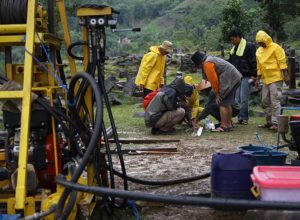 GunungPadang inflated like a hot-air balloon, you became the darling of the Alternative Archaeology crowd, Lost Civilization Department. With the prestige of the presidential connection through Andi Arief, the TKP (which became the TTRM, or Integrated Independent Research Team, in May 2012) you brushed off all criticism as springing from the hidebound orthodoxy of mainstream scholars. This, by the way, is a prime red flag for pseudoscholarship. The efforts of your detractors to stop you destroying the acknowledged archaeological site in favour of your fictional site, including a daft scheme to bring in five hundred untrained volunteers to excavate, were presented as a kind of censorship. I did construct a detailed timeline of the struggle, but it is beyond the scope of this article, and boring as hell besides.
GunungPadang inflated like a hot-air balloon, you became the darling of the Alternative Archaeology crowd, Lost Civilization Department. With the prestige of the presidential connection through Andi Arief, the TKP (which became the TTRM, or Integrated Independent Research Team, in May 2012) you brushed off all criticism as springing from the hidebound orthodoxy of mainstream scholars. This, by the way, is a prime red flag for pseudoscholarship. The efforts of your detractors to stop you destroying the acknowledged archaeological site in favour of your fictional site, including a daft scheme to bring in five hundred untrained volunteers to excavate, were presented as a kind of censorship. I did construct a detailed timeline of the struggle, but it is beyond the scope of this article, and boring as hell besides.
It all culminated in October 2014, when your activities at Padang were summarily shut down, and a new body was formed to replace the TTRM:
The Ministry of Education and Culture launched the National Team of Research and Management of Gunung Padang Site. This policy is expected to neutralize the feud between the researchers related to Gunung Padang Site. [It will be] chaired by the Director of Cultural Heritage Preservation and Museum of Ministry of Education and Culture, Harry Widianto. The team consists of 47 experts from various disciplines, such as archeology, geology, architects, and building techniques. Several members of the Independent Research Integrated Team (TTRM), such as Danny Hilman and Ali Akbar, were also included in the team…Harry said, “We hope that the research at Gunung Padang can be expressed in a more comprehensive form because it has been [marked by] chaos and arrogance from certain researchers.
Since that shotgun marriage between you and forty-odd experts who maintain that the site is a hill, research has stopped at G.Padang. Certain trends, though, have accelerated. One is the damage to the site wrought by the huge influx of visitors eager to see the supposed remains of an Atlantean wonder. Another is the money trail, the gleeful plans for touristic development, a train service, resorts and hotels, and so forth. From the sound of it, G. Padang could bring in millions, if not billions.
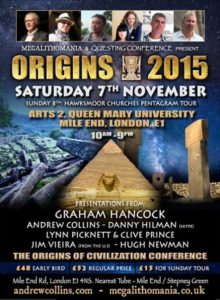 Third, there is your deepening immersion in the fraternity of pseudoarchaeologists, as evidenced, say, by your recent illuminating performance on Andrew Fisher’s Nature of Reality podcast. Honestly, Danny. Complex societies of the sort you envision are messy as hell—they leave tangible, unmistakeable traces, none of which show up in pre-Holocene Indonesia. You speak of agriculture—but what do you imagine your Atlanteans were growing? No domesticated crops can be traced back farther than the early Holocene. And you maintain that your Sundaland Atlantis was only the latest in series of vanished high civilizations—where is a shred of credible archaeological evidence for any of them?
Third, there is your deepening immersion in the fraternity of pseudoarchaeologists, as evidenced, say, by your recent illuminating performance on Andrew Fisher’s Nature of Reality podcast. Honestly, Danny. Complex societies of the sort you envision are messy as hell—they leave tangible, unmistakeable traces, none of which show up in pre-Holocene Indonesia. You speak of agriculture—but what do you imagine your Atlanteans were growing? No domesticated crops can be traced back farther than the early Holocene. And you maintain that your Sundaland Atlantis was only the latest in series of vanished high civilizations—where is a shred of credible archaeological evidence for any of them?
Enough, already. I have spent the last couple of months poring obsessively over reports on the sequence of events in 2010-2016, and here is my opinion on your approach to Gunung Padang:
First: contrary to your claims of scientific detachment, your agenda from at least 2010 onwards was to find support for an advanced pre-Holocene civilization, the glorious Nuswantara which the rest of the world knows as Atlantis. It is clear that you were aware of Oppenheimer and Santos by late 2010 at the very latest, and approved of their message.
Second: You did not, despite your protestations, do a blind investigation of Sadahurip and other sites. I think you followed in the footsteps of Turangga Seta to Sadahurip and other sites, and duly found the pyramids you were hoping for. And then you conveniently forgot about Turangga Seta.
Third: I’d suggest that Sadahurip was quietly dropped from the narrative because you could not carry on denying it was a natural formation. And yet, your evidence for it being a pyramid involved exactly the same kind of remote-sensing data that you used to declare G. Padang an artificial construction. Which means, in turn, that your confident interpretations of the patterning under G. Padang might be on the same level of bias and/or wishful thinking, and similarly unreliable. [“Unreliable” is the polite word.]
Fourth: You’re enjoying being a hero to the pseuds. And as far as I’m concerned, Danny, they’re welcome to you.
Addition: A certain image referenced in one of my comments below could not be included in the comment itself, so I am putting it here. On the left is the material between the stones of the sort that Danny’s team claims is ancient plaster, and which other geologists claim is normal weathering products. On the right is an image of similar weathering products, provided by a senior Indonesian geologist.
Addition: for the convenience of readers who have come first to this, the final episode of the Gunung Padang saga, I am appending links to the previous episodes:
https://skepticink.com/lateraltruth/2016/10/06/pyramids-naturally-pt-1/
https://skepticink.com/lateraltruth/2016/11/12/pyramids-pt-2-gunung-padang/
https://skepticink.com/lateraltruth/2017/01/01/pyramids-pt-3-radiocarbon-at-gunung-padang/
https://skepticink.com/lateraltruth/2017/05/14/gunung-padang-open-letter-danny/
https://skepticink.com/lateraltruth/2017/08/16/gunung-padang-letter-danny-hillman-pt-2/

